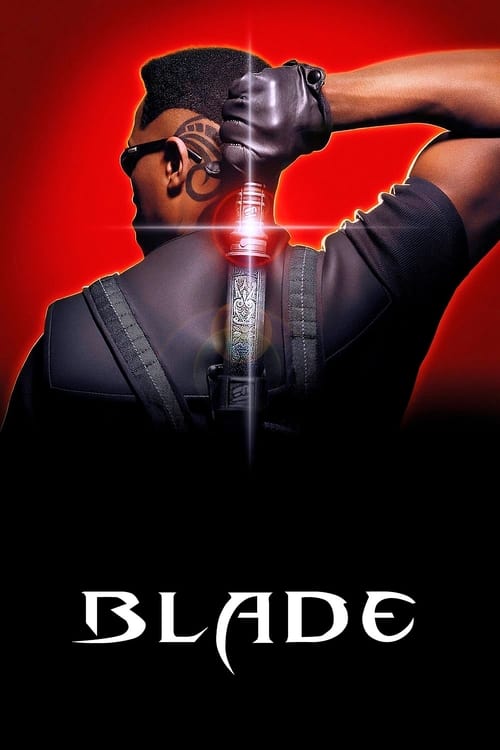Blade introduces us to the titular character, Blade, a half-human, half-vampire hybrid who hunts vampires to avenge his mother’s death and protect humanity from their bloodthirsty reign. The film wastes no time in thrusting the audience into its dark and dystopian world, filled with vampires and their underlings, the Reapers. The narrative flows smoothly, with well-structured pacing and a sense of urgency, keeping viewers engaged throughout.
The story, while engaging, occasionally leans towards predictability in terms of character motivations and plot developments. However, the film makes up for this with its rich lore and world-building, providing glimpses into the hierarchy of the vampire society and the moral dilemmas Blade faces as he grapples with his own vampiric nature. The storytelling effectively captures the essence of the comic book source material, creating a compelling narrative that balances action and character depth.
Wesley Snipes’s portrayal of Blade is undeniably one of the film’s highlights. His stoic and brooding demeanor fits the character perfectly, and his intense physicality during action sequences is a sight to behold. While Blade’s background and motivations are explored, the film occasionally leaves room for deeper character development. We get glimpses of his internal struggle with his own vampiric tendencies, but there could have been more exploration of his emotional journey.
The supporting characters, such as Whistler (Kris Kristofferson) and Dr. Karen Jenson (N’Bushe Wright), provide a well-rounded ensemble. Whistler, in particular, adds depth to the narrative with his fatherly relationship with Blade and his own tragic backstory. However, the film’s main antagonist, Deacon Frost (Stephen Dorff), while charismatic, lacks the complexity that could elevate him beyond a stereotypical villain. More depth in Frost’s character would have added layers to the conflict between him and Blade.
Blade excels in its visual and stylistic elements. The film’s dark, Gothic atmosphere sets the perfect tone for its vampire-centric world. The use of dark, rain-soaked streets and neon-lit urban landscapes creates a haunting and visually captivating backdrop for the action. Cinematographer Theo Van de Sande masterfully captures these visuals, delivering some iconic shots that enhance the film’s overall appeal.
The action sequences are choreographed with precision and flair, showcasing Blade’s martial arts prowess and his arsenal of weapons. The practical effects and practical stunts are impressive, creating a visceral and intense viewing experience. The film’s commitment to practical effects, even in the era of emerging CGI, is commendable and contributes to its enduring appeal.
Blade pays meticulous attention to costume and production design, adding depth to its characters and the world they inhabit. Blade’s iconic leather trench coat and sunglasses have become synonymous with the character, creating a distinct and memorable look. The vampire clan’s elaborate attire and ornate lairs reflect their opulent and decadent lifestyle, offering a stark contrast to Blade’s utilitarian aesthetic.
The production design further enhances the film’s immersive quality, from the hidden vampire nightclub to the underground lairs of the Reapers. These settings contribute to the film’s overall atmosphere and elevate it beyond typical vampire fare.
The film’s soundtrack and score, composed by Mark Isham, add a layer of intensity and emotion to the proceedings. The electronic and techno-infused music complements the film’s urban and futuristic setting. The pulsating beats and eerie melodies heighten the tension during action scenes and establish a mood of dread in quieter moments.
Blade, directed by Stephen Norrington, is a trailblazing entry in the vampire genre that successfully melds elements of horror, action, and comic book aesthetics. Its strengths lie in its engaging plot, visually stunning cinematography, and meticulous attention to costume and production design. Wesley Snipes delivers a memorable performance as Blade, and the film’s soundtrack adds depth to its atmosphere.

